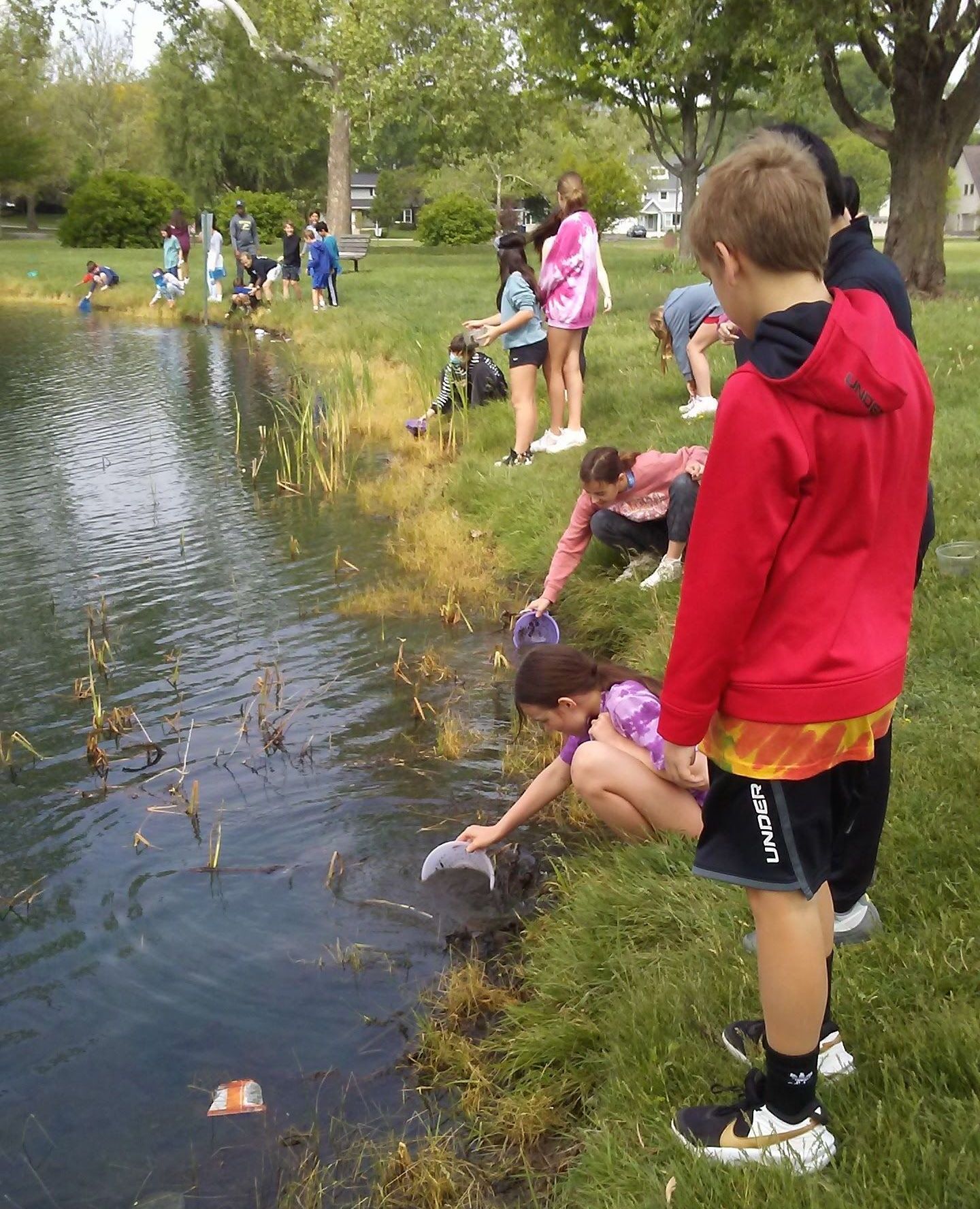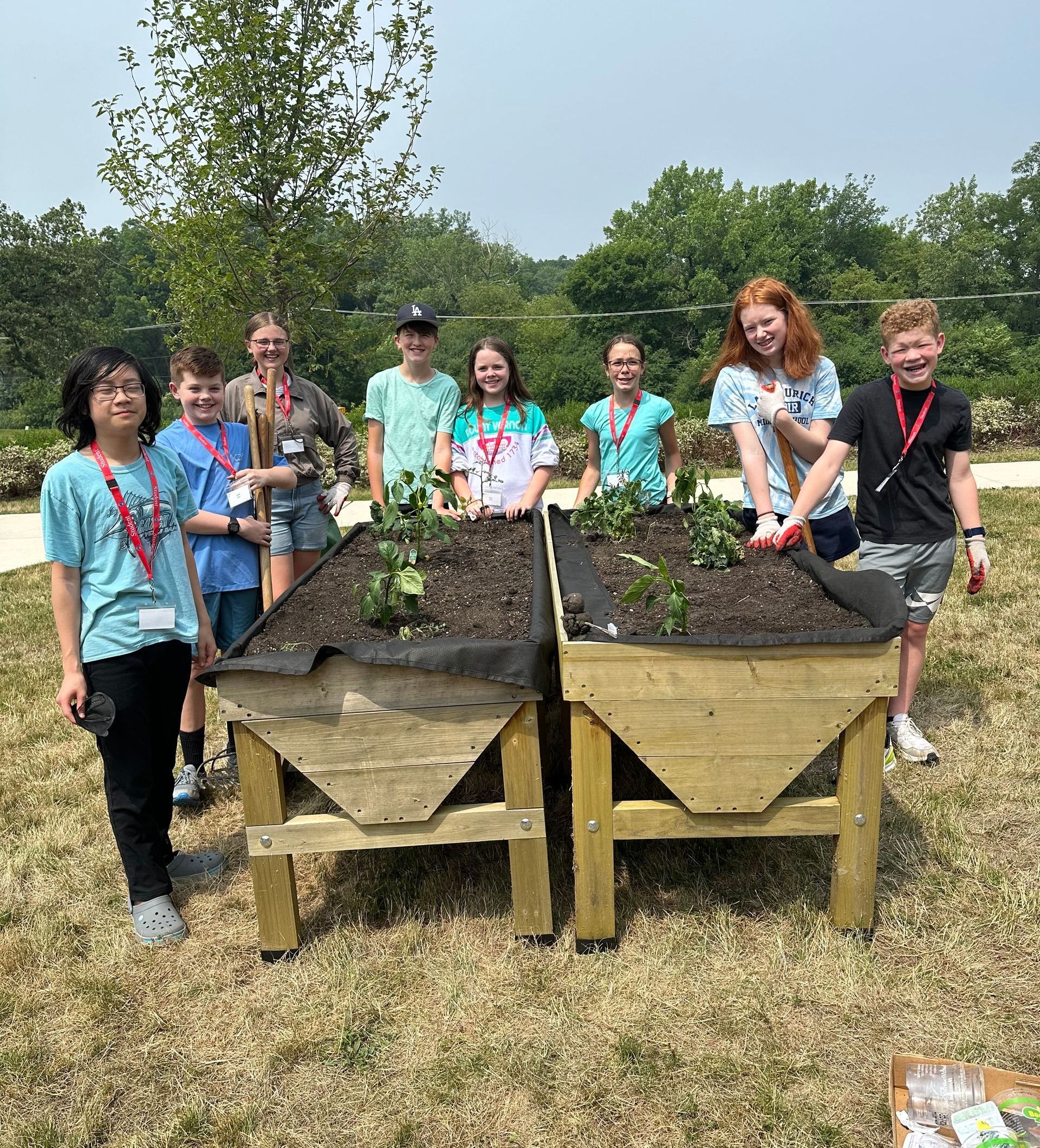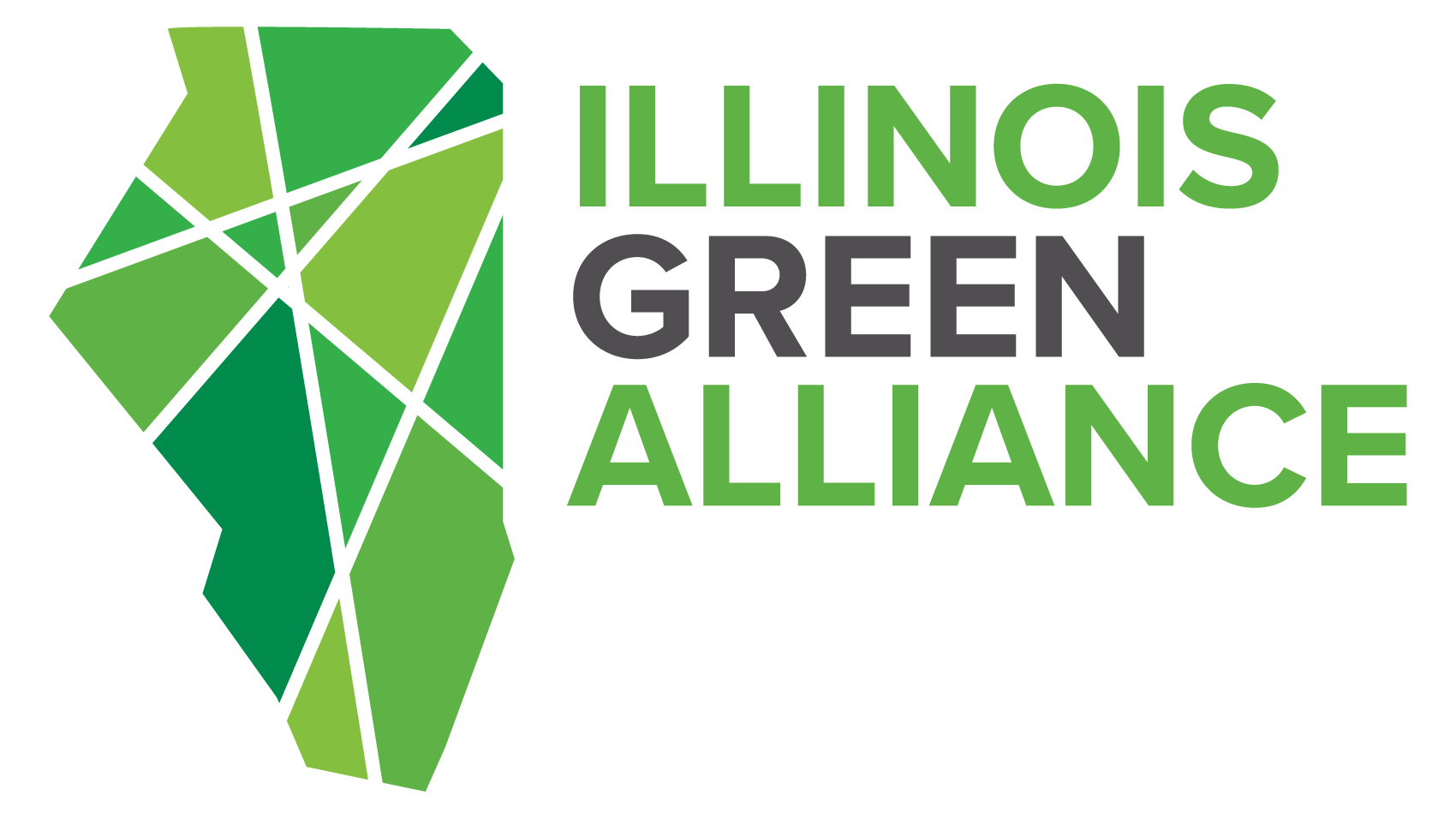U.S. Department of Education
Green Ribbon Schools (ED-GRS)

Earn national recognition for your
school's sustainability work.
The US Department of Education's Green Ribbon Schools Program (ED-GRS) recognizes schools, districts, and higher education institutions with active programs, actions, and dedication to sustainability. Working in partnership, the Illinois State Board of Education, the Illinois Board of Higher Education, and Illinois Green Alliance administer this program for Illinois.
Every school in Illinois can start on the path
towards a greener, more sustainable future.
Nominated Illinois Green Ribbon Schools demonstrate progress across three pillars:
Reduce Environmental
Impact & Costs
Improve
Health & Wellness
Environmental &
Sustainability Education
Illinois Green Ribbon Schools serve as a model for integrating environmental sustainability into every aspect of our schools. If a school is nominated at the state level, their application is sent to the national level for potential recognition as a U.S. Department of Education Green Ribbon School.
Illinois Green Ribbon Schools applications are officially open
for the 2024/2025 school year.
Download this year's application form below!
Applications this year are due
December 20th, 2024.
Congrats to Illinois' Honorees of 2024

Clarendon Hills Middle School
CHMS fosters a culture of environmental responsibility and global awareness among students and staff, leading them to become catalysts for positive change. The school has taken many steps to become a model Green Ribbon school including installation of refillable water bottle stations, solar panels and a wind turbine with educational graphic panels to explain how the systems work, updated building automation systems and HVAC controls, and a recent commitment to Community Solar to offset energy use with solar farms. They prioritize health and wellness with the help of 3 full-time Social Workers, a District Wellness Committee, and physical and mental health offerings for students. Curriculum aligned with effective environmental and sustainable education is paired with a Living Classroom for outdoor educational opportunities, and student clubs that lead on-site lunch composting, with resulting compost used to fertilize the school’s native gardens.
These actions and more reflect CHMS's dedication to implementing innovative practices to promote environmental stewardship, improve health and wellness, and offer effective environmental and sustainability education among students and staff within the community.
Lake Zurich
Community Unit School District
Lake Zurich CUSD 95's approach to sustainability, health, and environmental education spans the three pillars of the ED-GRS program. By executing a 36 month utility bill audit, tracking energy usage, implementing LED lighting, motion sensors, retrofitting HVAC systems, adding an EV charging station, and installing geo-thermal fields at three of their schools and solar panels at the largest elementary building with plans for further expansion, they experience significant energy reductions and savings. The installation of Merv13 filters with a rigorous ventilation system maintenance schedule, and adoption of an integrated pest management protocol to minimize pesticide use, ensure a safe environment for students and staff. The district’s butterfly gardens and native plant preservation sites and the establishment of compost stations in each building, driven by student-led initiatives, and the implementation of paper, cardboard, and plastic recycling reflect the district's commitment to hands-on learning and waste reduction.

Past Honorees of Illinois
Frequently Asked Questions
Who is eligable to apply?
All schools in Illinois are eligible to apply, including Pre-K-12 schools, districts, and higher education institutions. Applications will be judged based on the school's combined progress shown in all three of the Green Ribbon Schools pillars.
What is the application timeline?
Applications for the Illinois Green Ribbon Program open in the fall and are due in late December. Illinois Green will then submit the Illinois nominees to the U.S. Department of Education, which will announce the national awardees in the spring.
Download the application forms at the top of the page to start preparing!
How can my school apply?
ButtonApplications in Illinois are submitted by emailing the completed application form to Illinois Green Alliance at info@illinoisgreenalliance.org. Check out last year's forms, linked above, for an idea of the application content.
Who should fill out the application?
How long does the application take to complete?
ButtonApplications should encompass one year of sustainability efforts at your school. The application itself is 18 pages long and includes paragraph written responses. Completion will take multiple hours.
What is the page limit for the application?
ButtonThe application can not exceed more than 18 pages.

Is your school interested in sustainability but not ready for Green Ribbon just yet?
Sign up for the Illinois Green Schools Project to get started on the pathway to school sustainability!

